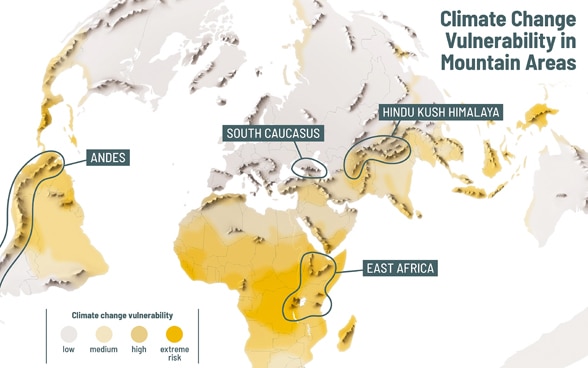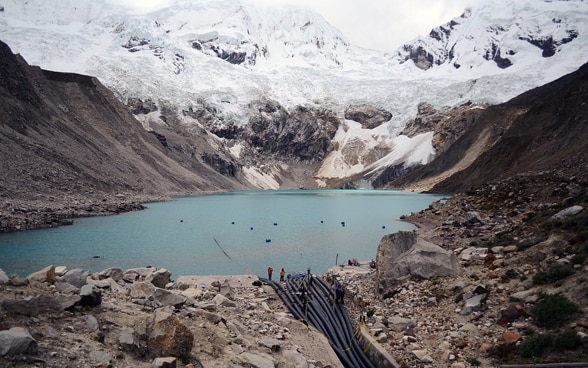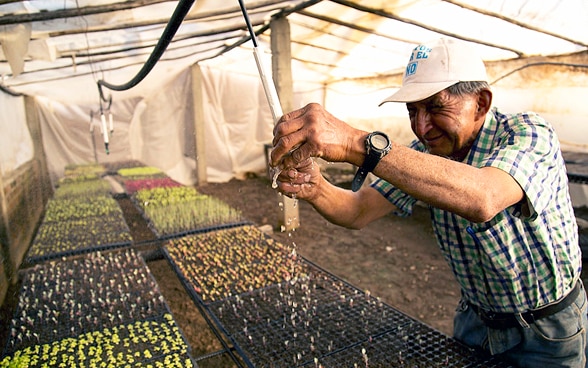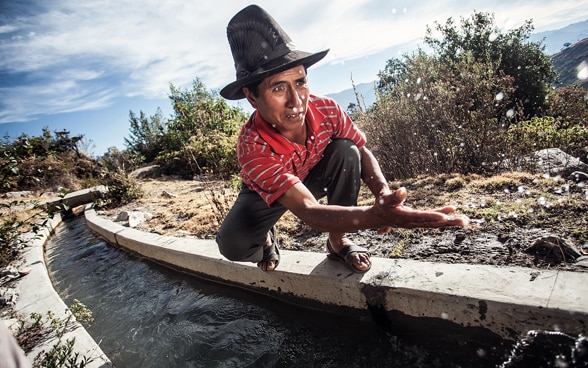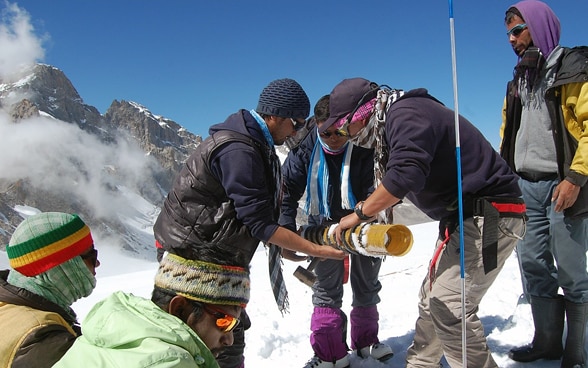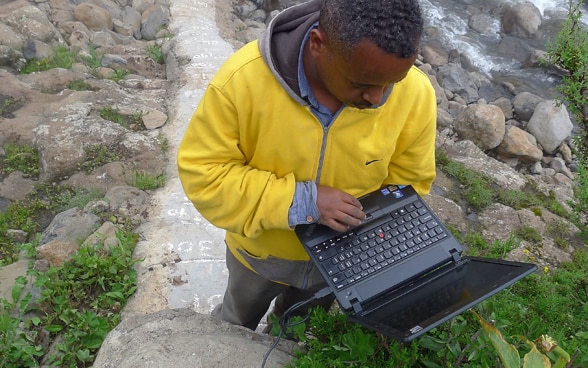Swiss expertise supports the sustainable development of mountain regions
Mountain regions are particularly threatened by the effects of climate change. Switzerland is committed to the sustainable development of the world's mountain regions and better living conditions for the especially vulnerable populations who inhabit these areas in developing countries. UN-designated International Mountain Day raises awareness of the importance and fragility of mountain ecosystems.
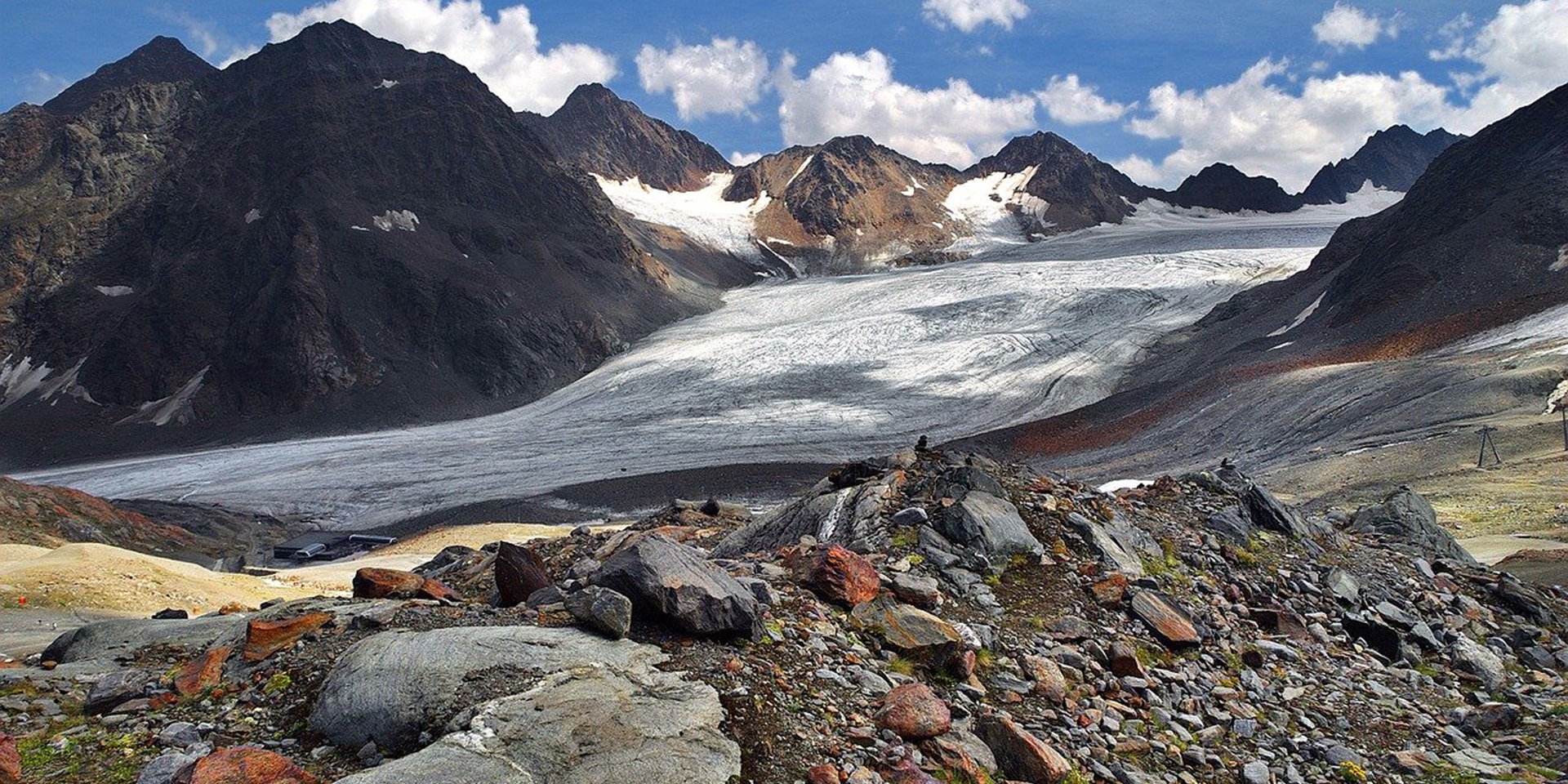
The Alpine region has been badly affected by climate change; 10% of its glacier volume has disappeared in the last five years. © pixabay
Mountains cover around one-quarter of the Earth's land surface and are the source of fresh water for half of all humanity. They are home to more than one-tenth of the world's population as well as numerous species of flora and fauna, and people see them as an important destination for recreational activities. Mountain regions have been particularly hard hit by climate change. Consequently, their ecosystems and inhabitants are suffering more than most from global warming.
Swiss expertise devoted to mountain environments
Protecting fragile mountain ecosystems is a key factor in successful sustainable development and has been included as a goal in both the SDC's Global Programme Climate Change and Environment and the 2030 Agenda. As an Alpine country that is also seriously affected by the retreat of glaciers, Switzerland has a great deal of experience in managing water, land and forests as well as natural hazards. It is a global leader in mountain research and has been successfully contributing its expertise to international cooperation efforts for many years. As a member of the Alpine Convention, an international treaty for the protection of the Alps, Switzerland works with the other Alpine states to develop cross-border solutions addressing climate change and biodiversity. It will hold the Presidency of the Alpine Convention in 2021 and 2022.
Climate change hits mountain regions in developing countries particularly hard – an example from the Hindu Kush Himalayan region

Nine out of ten people living in mountain communities do so in developing countries. They are among the poorest sections of the population anywhere.
The International Centre for Integrated Mountain Development (ICIMOD) based in Kathmandu, Nepal is a partner organisation of the Swiss Agency for Development and Cooperation (SDC). Eklabya Sharma, Deputy Director General of ICIMOD reports on the situation in the Hindu Kush Himalayan region: "The impact of climate change in the Hindu Kush Himalayan region is alarming. Melting glaciers and drying-up rivers endanger the water supply of roughly 1.9 billion people living in the mountains and major river basins downstream. The lack of water, both for drinking and for agriculture, is causing a loss of biodiversity and posing a threat to people's livelihoods. The mountain communities who make their living from agriculture are suffering increasingly from food insecurity. Around half of them are food insecure or malnourished. In addition, rising temperatures are causing more frequent natural disasters such as debris avalanches, mudslides and floods."
Transnational adaptation to climate change
"Innovative ideas and measures to adapt arable and livestock farming are needed to improve the livelihoods of the mountain communities. To equip people living in mountain areas to cope with natural disasters, we joined forces with the SDC to develop an early warning system for floods and landslides. The local mountain people manage the warning system and communicate using simple mobile phone technology and are thus able to save lives. The system is now also being used in Nepal, Pakistan and parts of India," explains Sharma.
Another project run by the SDC with ICIMOD as one of its partners is 'Adaptation at Altitude', in which scientific data on climate change and experiences in applying previously tested adaptation measures in the Hindu Kush Himalayan region, the South Caucasus, the mountain regions of East Africa and the South American Andes is collected, analysed and shared on a global platform. Thirty potential adaptation strategies have already been posted on the platform. The stakeholders from the political and academic world then enter into a dialogue with the local communities in order to create an improved policy framework for implementing the measures.
Facts and figures
- 50% of biodiversity hotspots are to be found in mountain areas.
- 40% of the entire mountain population faces food insecurity.
- 55% of mountain land is vulnerable to earthquakes.
- 10% of the Earth's land surface is covered by glaciers.
- The South American Andes and the Alps are hardest hit by the retreat of glaciers: 10% of their volume has melted in the last five years.
- Mountain people also live in large towns and cities: Kathmandu (Nepal) has a population of 3.4 million and is 1,400 metres above sea level; La Paz (Bolivia) has 900,000 inhabitants and stands at an altitude of 3,640 metres.

